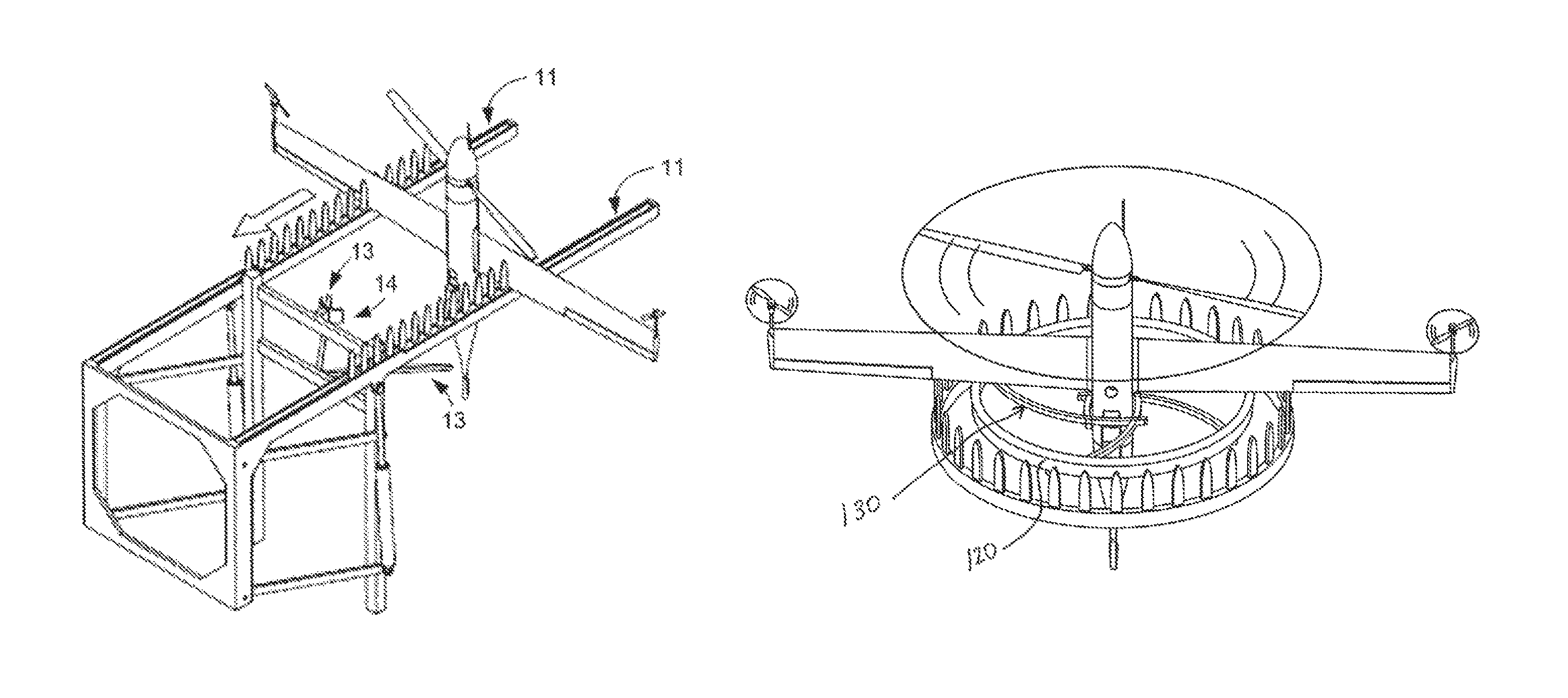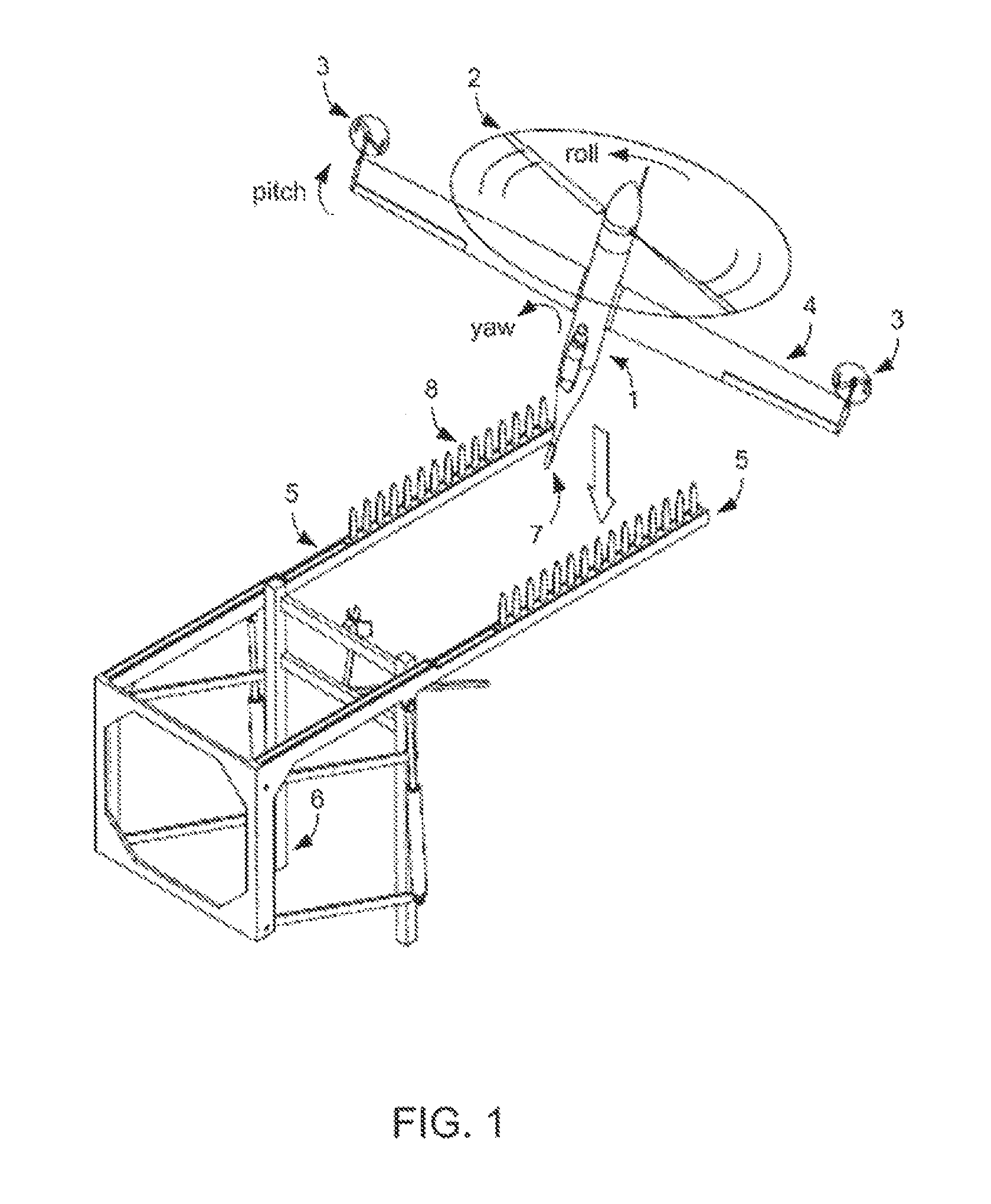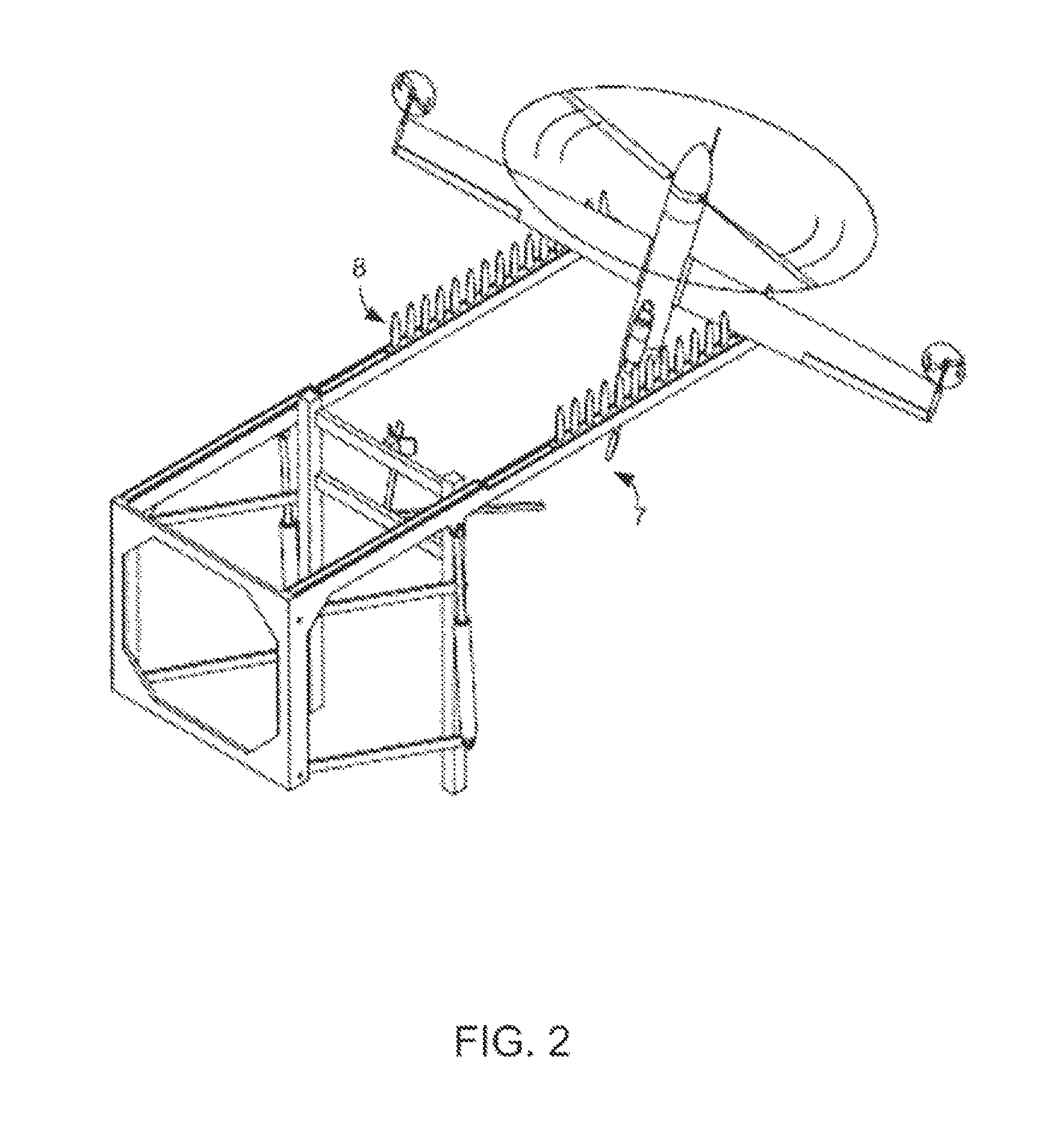Method and apparatus for automated launch, retrieval, and servicing of a hovering aircraft
a technology for hovercraft and aircraft, applied in the direction of anchoring equipment, launch/towing gear, transportation and packaging, etc., can solve the problems of limited success, system requires an expensive and substantial plant in the landing area, and can be difficult to achieve the effect of preventing overstressing the aircraft or the base apparatus, simple and economical apparatus, and moderate accuracy
- Summary
- Abstract
- Description
- Claims
- Application Information
AI Technical Summary
Benefits of technology
Problems solved by technology
Method used
Image
Examples
Embodiment Construction
[0010]In one embodiment of the present disclosure, an aircraft would proceed automatically from free thrust-borne flight through retrieval, servicing, and subsequent launch via the sequence of actions generally shown in FIGS. 1, 2, 3, 4, 5, 6, 7, 8, and 9.
[0011]FIG. 1 shows the aircraft 1 hovering above the base apparatus 6. The aircraft 1 in this example is supported by a main rotor 2, which controls pitch and yaw with rotor cyclic as in a conventional helicopter. Control in roll, (i.e., about the spin axis of the rotor) is effected by thrusters 3 at the tips of the aircraft's wing 4. The wing 4 serves during launch and retrieval to engage rails 5 extending from the base apparatus 6 as further discussed below.
[0012]In preparation for retrieval, the aircraft 1 attempts to center itself above the rails 5. Winds and base motion may prevent the aircraft 1 from stationkeeping continuously. However, the aircraft 1 is able to measure position and velocity relative to the base apparatus 6,...
PUM
 Login to View More
Login to View More Abstract
Description
Claims
Application Information
 Login to View More
Login to View More - R&D
- Intellectual Property
- Life Sciences
- Materials
- Tech Scout
- Unparalleled Data Quality
- Higher Quality Content
- 60% Fewer Hallucinations
Browse by: Latest US Patents, China's latest patents, Technical Efficacy Thesaurus, Application Domain, Technology Topic, Popular Technical Reports.
© 2025 PatSnap. All rights reserved.Legal|Privacy policy|Modern Slavery Act Transparency Statement|Sitemap|About US| Contact US: help@patsnap.com



